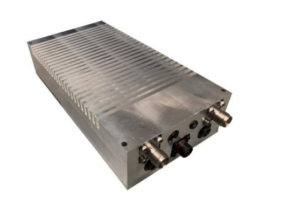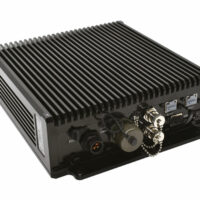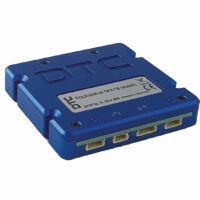Airborne tactical radio enables military aircraft to remain in contact with other aircraft and with forces on the ground. Military airborne radios carry voice and data traffic and assist aircraft identification and navigation.
ATC & Identification
Voice and data radio remains essential for ATC (air traffic control). Air traffic controllers and pilots use voice radio to send and receive information and instructions. Radio transmits details of an aircraft’s identity and flight characteristics to controllers.
Airborne radios are also used to receive navigation information from radio beacons on the ground helping aircraft to determine their location. Radio is also the dominant technology used for Instrument Landing Systems (ILSs). ILS uses radio beams transmitted from the end of a runway. These are received by the aircraft’s radios and let the pilot know if they are approaching the runway correctly.
Encrypted Airborne Radio
The military uses voice and data radio although this traffic will often be encrypted in wartime to prevent eavesdropping. Similarly, identification information transmitted by military aircraft will be encrypted. Information like the whereabouts of hostile aircraft or ground-based air defenses will be transmitted to and from military aircraft in an encrypted form. Such information is typically carried on radio networks known as tactical datalinks.
Military HF Radio
Voice, data, navigation and identification services provided for civilian and military aircraft all use specific frequencies reserved by the International Telecommunications Union (ITU). The ITU regulates the global use of the radio spectrum and earmarks several specific Very/Ultra High Frequency (V/UHF) wavebands of between 30 megahertz/MHz and three gigahertz for aviation use.
Military aircraft also routinely use the High Frequency (HF: three megahertz to 30MHz) waveband. HF radio is useful as it can facilitate communication across ranges of thousands of miles. This is unlike V/UHF wavebands. These wavebands must have an uninterrupted Line of Sight (LOS) between two radios for unimpeded communications. Likewise, aircraft now routinely carry satellite communications terminals operating in an array of frequencies to ensure non-LOS communications.
Air-to-Ground/Ground-to-Air Radio Communications
Radio began to be used by aircraft shortly after the first powered flight by the Wright Brothers at Kittyhawk, North Carolina in 1903. Communications between aircraft and the ground was initially performed with visual signals. There were several major drawbacks with this approach. Firstly, pilots had to see the signals. However, low visibility and the aircraft simply being too far from the signals to see them properly could impede this. Secondly, the pilot had no means of replying.
Interestingly, the growth of flight accompanied the spread of radio technology from the late 19th century. Initially aircraft used wireless telegraphy, more commonly known as Morse code. The 1912 Italo-Turkish War and the First World War of 1914 to 1918 increased the adoption of wireless telegraphy by aircraft. The first air-to-ground/ground-to-air voice radio communications occurred in the United Kingdom in 1915. By the late 1930s, the US Army had pioneered a nascent nationwide Air Traffic Control (ATC) service using radio.
Voice and Morse radio communications between aircraft became widespread during the Second World War and radio was adopted for tasks like Forward Air Control (FAC). This would see a soldier on the ground using voice communications with a pilot to direct a tactical air-to-surface engagement. The conflict saw radio increasingly used to share data. The Luftwaffe (German Air Force) pioneered a way of sending an aircraft written information via radio that could be printed in the cockpit on a paper tape.


















